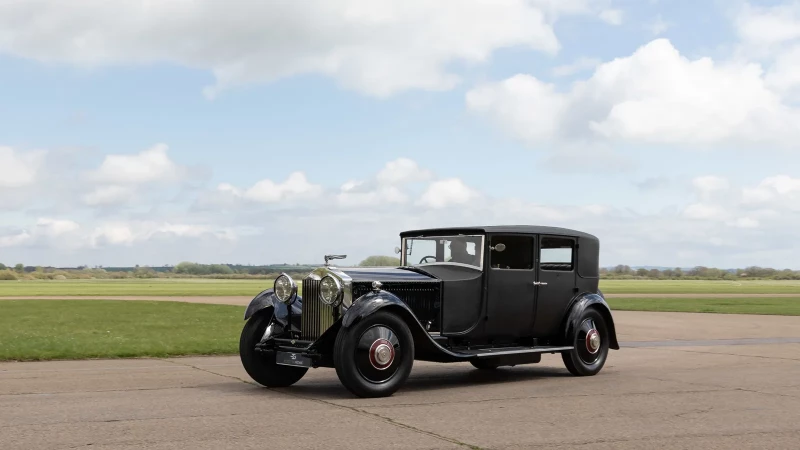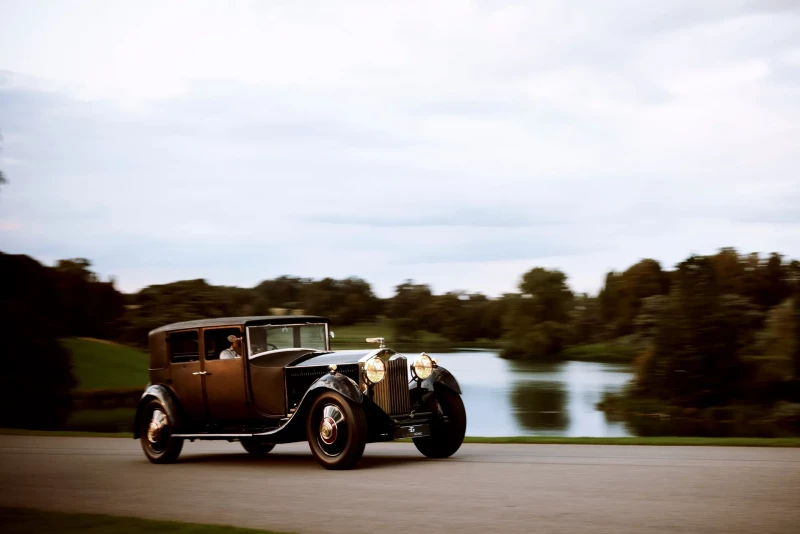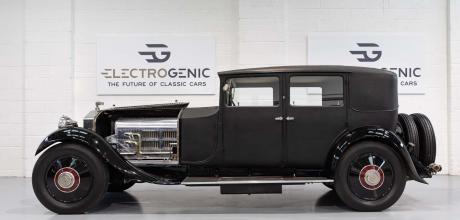Electric Electrogenic Phantom II: Rolls-Royce’s Silent Destiny?
At Salon Privé on August 30th, a UK-based firm launched what could be the most ambitious and accomplished EV conversion of a classic car to date – a 1929 Rolls-Royce Phantom II H.J. Mulliner saloon. The conversion has been performed by the Oxfordshire company Electrogenic for a private collector ‘with a passion for the environment’, says the firm.
Electrogenic have already developed drop-in kits to convert the Land Rover Defender, Porsche 911, original Mini and Jaguar E-type. The most eye-catching feature of this latest creation, developed during a build time lasting thousands of hours over eighteen months, is a battery bank with a capacity of 93kWh housed under a rivetted aluminium cowling. This has been sited under the bonnet and does a convincing job of imitating the size and shape of the Phantom II’s original 7.7-litre engine. The battery capacity is said to provide 150 miles of real-world range.

The batteries feed an electric motor mounted between the chassis rails via a custom single-speed direct drive transmission, delivering 150kW (201bhp) and 310Nm (229lb ft) of torque to the fixed reduction gear, which in turn delivers 1,000Nm (738lb ft) to the prop shaft. The systems are all linked and managed by a bespoke suite of software — all developed in house by Electrogenic’s software engineers.
One key challenge was devising a way to preserve and update the Phantom’s centralised, entirely mechanical, ‘through-flow’ chassis lubrication system. This sends oil to the car’s many phosphorbronze bushes for brake and suspension linkages, as well as other mechanical control systems. The complex arrangement was disrupted by the removal of the engine and so Electrogenic supplemented its design to ensure it continued to work as intended.

Another challenge the team faced was re-designing the original cable-operated braking system. The original brake pedal and levers sat under the bulkhead in space now taken by the large battery pack, so Electrogenic re-positioned the brake levers and cables – maintaining the original ratios of the mechanical balancing system in a new configuration. The brakes are operated by a new pedal, with braking power amplified by a hydraulic system installed between the pedal and the original cable actuators. As a final touch, the Electrogenic team calibrated the brakes to work in tandem with the motor’s energy regeneration function, further enhancing braking performance while also boosting efficiency and range by topping up the batteries.
There will no doubt be those who are dismayed at such extensive changes made to a car like this Phantom II, though Electrogenic state that all modifications are reversible. This is often claimed in EV conversion of classic cars and in theory, anything is reversible given sufficient time and money. But while they remain in electric form, can they still be regarded as historic vehicles? Those who enjoy classic and vintage Rolls-Royces often do so for the engineering and driving experience as much as for the car’s appearance, yet it’s difficult to deny that the car’s creators were always searching for silent, smooth and potent powertrains. Are Rolls-Royces and indeed Bentleys therefore more suited to EV conversion than other classics?


